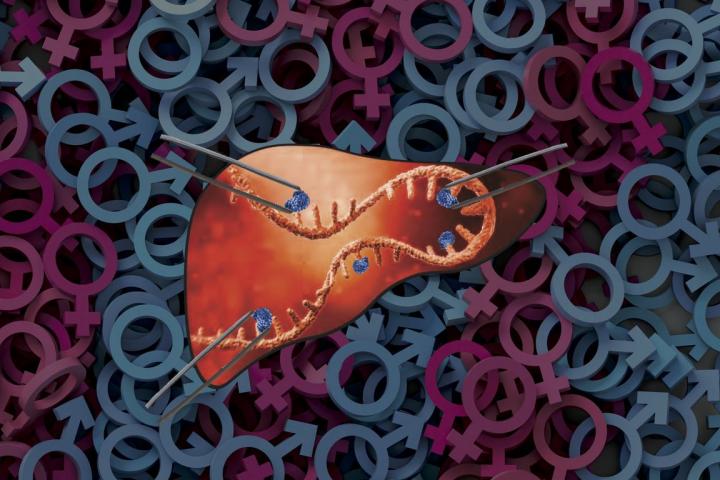Nonalcoholic fatty liver disease (NAFLD) is an umbrella term for a range of liver conditions affecting people who drink little to no alcohol. The main characteristic of NAFLD is too much fat stored in liver cells. A new mouse study by the University of California, Los Angeles (UCLA), reveals that a chemical modification that occurs in some RNA molecules as they carry genetic instructions from DNA to cells’ protein-making machinery may offer protection against nonalcoholic fatty liver.
Their findings are published in the journal Nature Metabolism in a paper titled, “Transcriptional regulation of N6-methyladenosine orchestrates sex-dimorphic metabolic traits.”
“Males and females exhibit striking differences in the prevalence of metabolic traits including hepatic steatosis, a key driver of cardiometabolic morbidity and mortality,” wrote the researchers.
“RNA methylation is a widespread regulatory mechanism of transcript turnover. Here, we show that presence of the RNA modification N6-methyladenosine (m6A) triages lipogenic transcripts for degradation and guards against hepatic triglyceride accumulation. In male but not female mice, this protective checkpoint stalls under lipid-rich conditions.”
Their findings show that m6A is needed for precise control of lipogenic enzyme activity and “provide insights into the molecular basis for the existence of sex-specific differences in hepatic lipid traits.”
The study, conducted in mice, also suggests that this modification may occur at a different rate in females than it does in males, potentially explaining why females tend to have higher fat content in the liver. Without the m6A modification, differences in liver fat content between the sexes were reduced significantly.
The researchers also discovered in a preclinical model, that gene therapy can be used to enhance or add modifications to key RNAs to slow down or reduce the severity of liver disease.
The researchers hope their findings will lead to future research on the development of therapies to enhance chemical modifications as a way to protect against liver disease and similar disorders.



